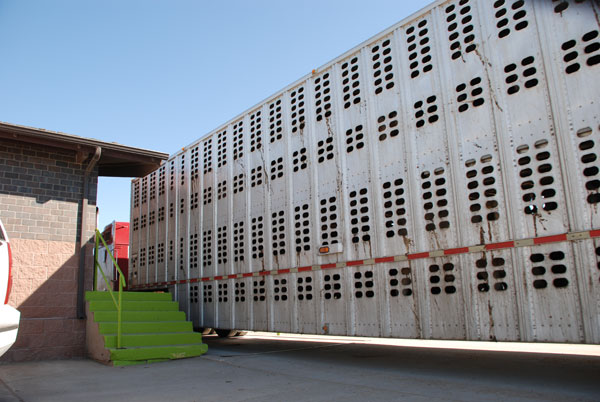February 18, 2016

Cattle are worth whatever a buyer and seller agree they are worth. But it’s increasingly difficult to determine a starting point with any confidence, as cash trade gets thinner and futures prices hit the limit too frequently.
“We went from the third-largest rally in the history of our industry from 2014 to 2015, and then turned around and went through the third-largest break in the history of our industry during the last 12 months,” says Randy Blach, CattleFax CEO.
“We’ve seen $15 moves [Live Cattle futures] every 15 days going back to August. This has happened six times,” Blach explains. “That’s a difference of $200 per head every 15 days. It’s the second-most volatile market in history.”
It’s tempting to blame the least-understood forces, like high-frequency, algorithmic trading. However, Blach points to several fundamentals that fueled the market meltdown but were difficult to predict amid the storm.

BEEF Seedstock 100 List
Looking for a new seedstock provider? Use our UPDATED Seedstock 100 listing to find the largest bull sellers in the U.S. Browse the list here.
Heading into the cattle cyclical price peaks in late 2014 and early 2015, Blach explains a perfect storm of events meant there was too little beef, pork or poultry to meet demand. Quick as a wink, the opposite was true.
“In 2015, we ended up with the largest net meat supply increase in our domestic market for any single year going back to 1950,” Blach says. Heading into 2015, CattleFax and other analysts expected domestic per-capita net meat supplies to increase by 5 pounds or so; it ended up closer to 10.
Besides increased domestic meat production, the stronger U.S. dollar helped hamstring international demand while attracting more meat imports. As fed cattle prices declined, economics told cattle feeders to add more weight to cattle. Ultimately, the surplus of too-heavy cattle became both the ill and the symptom of the ill.
At the same time, cash markets grew thinner in certain regions of the country — south and central — that the industry has come to rely on most for price discovery. As cash trade dried up in those regions, Blach says the market does what the market does; it found the cheapest point of entry.
And no, alternative marketing arrangements for fed cattle, like formulas and grids, are not the culprit. It’s more akin to having trouble finding a wheelwright as cars got closer to overtaking the horse. The benefits were too great to backtrack, though some unique challenges were created and needed to be solved for continued evolution. In this case, the industry has to get a handle on price discovery.
Regarding the growing frustration with the usefulness of futures markets as a viable tool to manage price risk, Terry Duffy, CME Group executive chairman and president, recently addressed specific concerns of the National Cattlemen’s Beef Association Cattle Marketing and International Trade Committee.
It’s too early in the game for many concrete answers, but Duffy left no question that he takes the concerns seriously. The CME Group pledged to work closely with the industry to identify solutions.
Meanwhile, back at the ranch: “The market has absorbed the bulk of the supply shock and most of the price shock,” says Kevin Good, CattleFax senior market analyst. Beef exports are projected to be higher year over year, and beef imports should be lower, he says. But prices will trend lower with the cattle cycle.
“When you have growing supplies from a long-term standpoint, you tend to have highs sometime between March and May, and the fourth-quarter rally is not as pronounced as it is in most years,” Good says. “We still think the calf market will stay strong enough to support expansion again in 2016, albeit at a slower pace.”
You might also like:
Enjoy a laugh! Holmes and Fletcher Classic Cartoons
13 things to consider to holistically manage your cowherd
So you want to be a sustainable rancher? 7 steps to make it happen
Can you use snow as a water resource for your cattle?
100+ spring calving photos from readers
It's hay time! 10 new mower conditioners in 2016
You May Also Like
.png?width=300&auto=webp&quality=80&disable=upscale)

.png?width=300&auto=webp&quality=80&disable=upscale)
